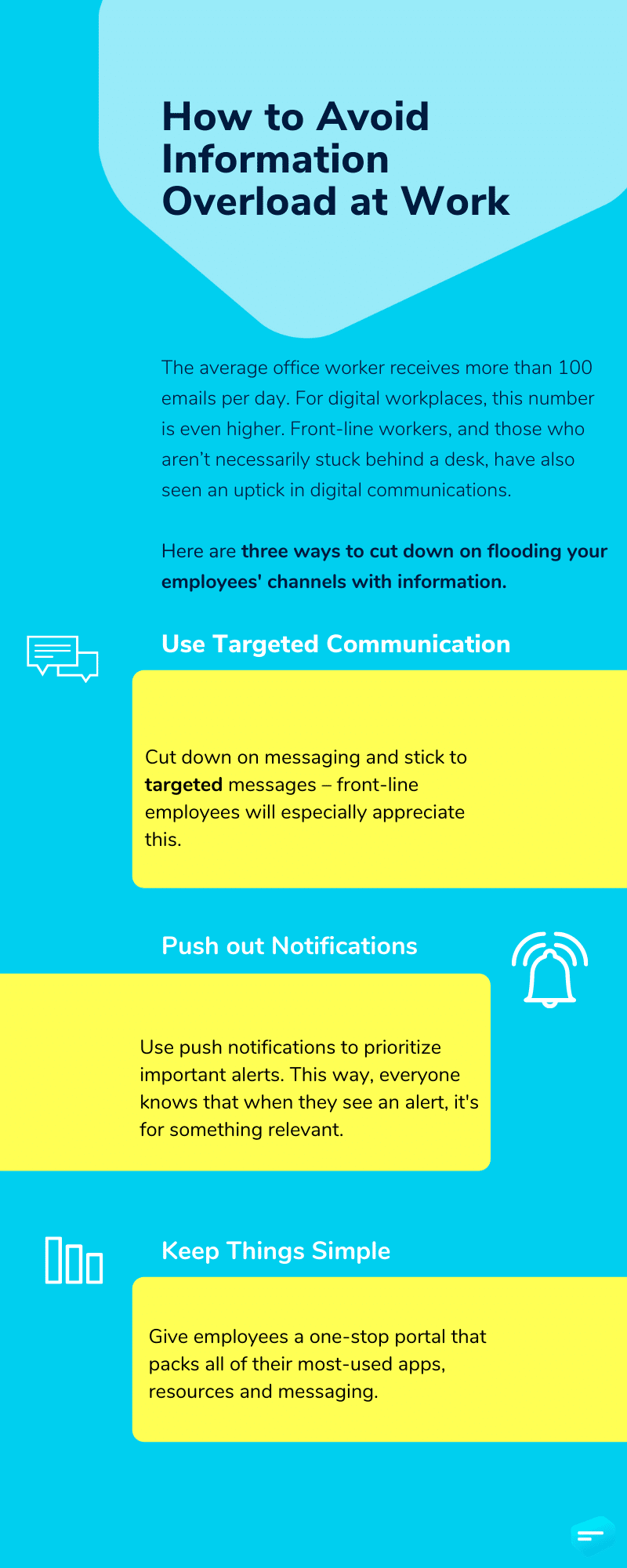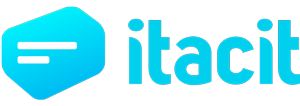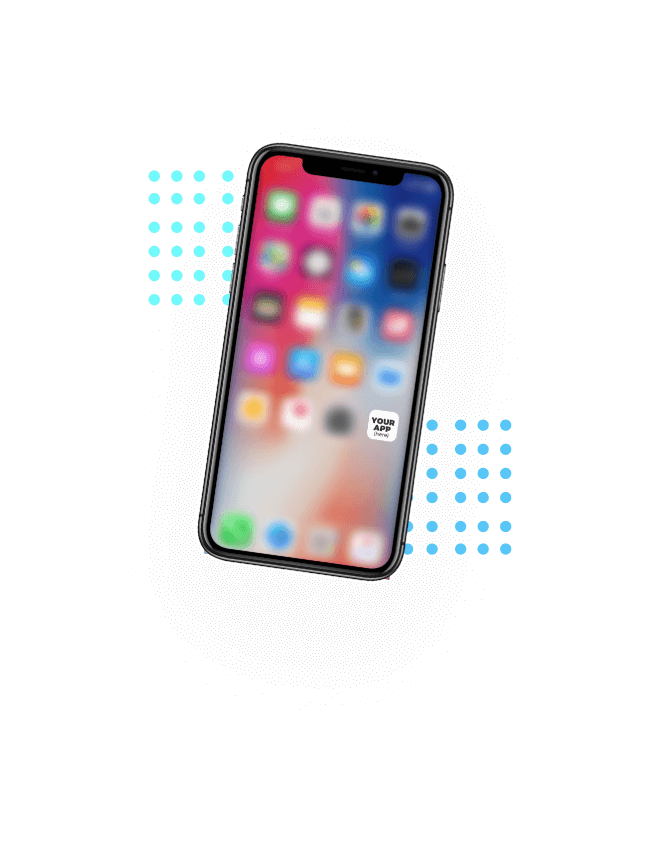Information overload in the workplace is a real problem. Not just for desk workers, but for front-line workers as well. The recent shift to the widespread adoption of digital workplaces has accentuated our reliance on digital workplace platforms, further magnifying this problem.
Glued to our screens throughout the day – whether that’s checking email, internal messages, digital forms, video calls, or social media – the amount of information a worker consumes is staggering.
Consider these tips to avoid information overload in the digital workplace
The average office worker receives more than 100 emails per day. For digital workplaces, this number could be even higher. Front-line workers, and those who aren’t necessarily stuck behind a desk, have also seen an uptick in digital communications.
As even front-line workplaces are moving to more digital environments and their desk colleagues are working remotely, they too have to spend significant time in front of a screen catching up on all these messages. Frequently only after their shift is done.
Does an abundance of information impede a worker’s ability to perform their tasks? Equally as important – does this onslaught of data in the workplace have detrimental effects to employees’ mental and physical health?
What is Information Overload?
There’s no denying that smartphones have changed the way most people interact with technology. At home and at work, smartphones have become less of a luxury and more of a necessity.
This overwhelming amount and constant barrage of digital information can lead to an increasingly prevalent problem called information overload.
Information overload is the overconsumption of media – whether that’s digital media, television, or print. In a digital setting, this consumption can get to a point where our brain can’t parse data effectively. This potentially leads to anxiety, impaired decision making, or the inability to come to conclusions. It can also affect a person’s focus, as they get easily distracted by other incoming information.
In the digital workplace, information overload is a serious issue facing staff across all positions. In fact, 25% of workers – and a staggering 36% of managers – experienced stress or health problems due to an untenable amount of information to process.
The awareness that information overload can affect anyone is the first step to battling it. Luckily, there are many ways to limit or eliminate information overload in the digital workplace.

How to Avoid Information Overload
Avoiding information overload in the digital workplace has its challenges. When a large percentage of the workday relies so heavily on smartphones, tablets, and laptops, eliminating screen time may not be an option.
Workers should use their screen time efficiently, and avoid the common pitfalls of our reliance on technology.
For front-line workers, distractions stemming from digital information can lead to major problems. Essential workers, those in health-care for example, can’t afford to let their critical thinking ability be derailed by an information overload.
Applying a few crucial, but conscious, strategies throughout the day can help minimize the risk of information overload. This means more time for front-line and essential workers to focus on their actual jobs while ensuring a safe and healthy workplace for themselves and others.
Harness the power of targeted communication
We’ve all been victims of incessant emails not related or useful for our specific role. Being stuck in an email chain, irrelevant newsletters, or unwanted marketing materials can clutter up our inboxes.
For front-line workers, a more targeted communication stream can eliminate this unnecessary noise. The use of an employee communication software can consolidate messaging and be the go-to place to check on important updates and critical information.
Catch your employees’ attention with push notifications
Email simply isn’t the best choice when you’re trying to push out an urgent item. Even with notifications turned on, things are quickly flooded or buried by other communications.
For employees on the front-line – who may not have an email set up at all – notifications from an app instead are just more alerting: The screen lights up, a tone plays, and you’ll be reminded to open it. When an app is only notifying for only the most relevant or time-sensitive content, it’s far easier to communicate what’s important that is coming through.
Stop sending employees to multiple sites, logins and portals
Relying on multiple sources of information to fulfil a job can place unnecessary burdens on employees. If a worker is expected to perform their task, information cascaded to them from within the company needs to be easily digestible, clear and concise. This rings true especially for client facing and front-line positions.
A simplified one-stop portal, like an employee app, can consolidate all required information, allowing workers to stay focused on the job at hand. When it comes time to access digital information, a direct link to all types of information – from email, intranet messaging, and HR related documentation – is only a click away, packed into one app.
Staying Connected Without Overloading
In the digital workplace, the majority of information is – of course – consumed digitally. Even for front-line workers, most of their internal communications and paperwork is all dealt with through digital devices.
Balancing essential work with back-end and employer communications can be difficult. Understanding the common pitfalls of information overload is the first step to eradicate this all-too-common problem. No one is immune to it, but with some straightforward, practical solutions in place, everyone can ensure that their digital information intake remains in check.

















